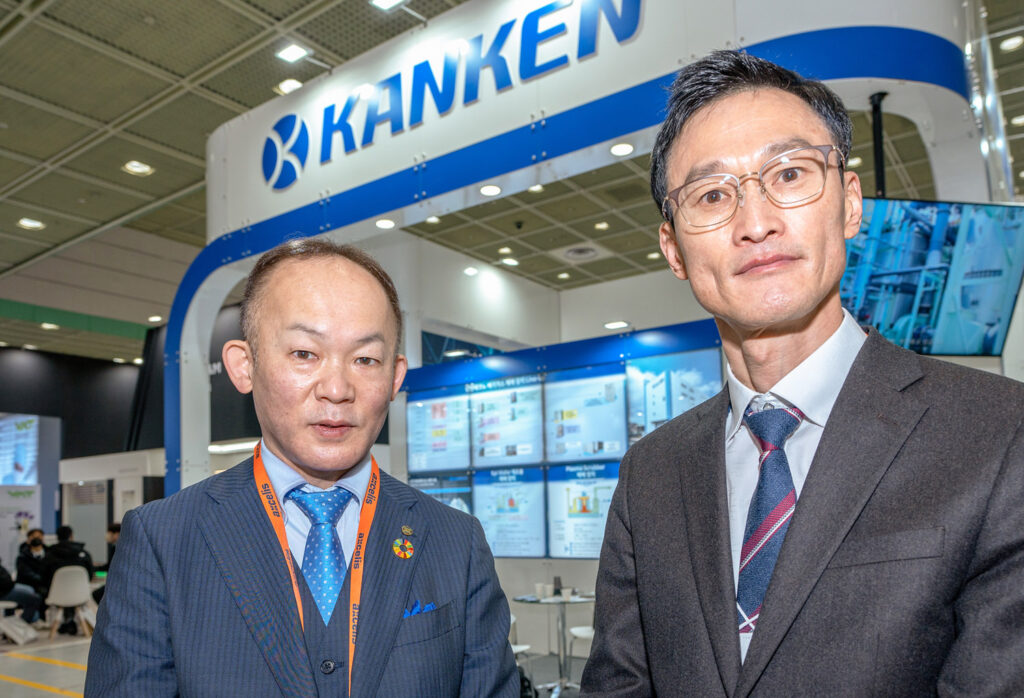ASIA ELECTRONICS INDUSTRYYOUR WINDOW TO SMART MANUFACTURING
Kanken Techno Preps up for Korea’s Next IC Growth Cycle
A semiconductor cleanroom is a highly purified dust-free facility. It is where invisible and odorless toxic gases are widely used to deposit, diffuse, and edge circuitry patterns out of silicon wafers. Also, a fleet of prohibitively expensive chipmaking equipment, like lithography, edging, diffusion, deposition, and ion implantation is set up in a cleanroom.
Specifically, to suck gas wastes in a cleanroom, several thousands of abatement scrubber systems are installed inside and outside.
Kanken Techno Co., Ltd. is a Japanese supplier of abatement scrubbers. It sells a variety of these systems from plasma, heater, and hybrid. Since 2009, it has sold about 600 units of abatement machines in Korea. The Japanese company expects to supply about 200 systems in Korea in 2022. However, the sudden market downturn might bill out booked orders through 2023 and 2024.
Also, the company projects the semiconductor market to pick up beginning in 2024. This will revitalize demand for abatement systems as chipmakers resume the construction of new fabs across the world.
At the sidelines of SEMICON Korea 2023, Koichi Imamura, senior executive vice president with Kanken Techno was asked how Korea’s progressively stricter environmental regulation will affect its business. According to Imamura, it would surely provide growth impetus and contribute to long-term sales growth. However, the company would rather bet that overall market conditions would be better in 2024. This lays out the launching pad for another business takeoff.

Eco-Friendly Abatement Systems
Kanken’s abatement system is an indispensable part of the semiconductor cleanroom operation. It thermally burns out toxic gases, like boron, phosphor, and even extremely lethal arsenic, with heat or plasma. More so, it corrodes and wets out with water to abate them by a degree of more than 99.9% or below 1ppm (part per million).
Mainly, all its abatement systems are eco-friendly using electricity as an ignition source. This feature sets Kanken apart from the competition. Specifically, the electricity-ignited abatement does not generate carbon dioxide (CO2) gases and waste fuel like thermal nitrogen oxide (NOx).
A case in point, the KT1000MFS-G and MFS GL product series are outstanding examples of machines that use an electric heater system. Chemical vapor deposition (CVD) processes employ these models. Also, these product series are comparatively cheaper to maintain, too.
Additionally, Kanken Techno offers KT1000EPS/EPS-C series of abatement systems to detoxicate gases ejected from epitaxial wafer processes. Meanwhile, the company offers the KD Series to abate gases generated in ion implantation processes. For example, the KT1000MFS series are applied in the waste gas treatment of 300mm semiconductor and LCD production lines. It is space-saving, low-cost, and easy to install and maintain, as it does not require a big maintenance space.
Korea’s Leading Abatement System Supplier
In Korea, Kanken supplies abatement systems to memory chip maker SK hynix and bare wafer maker SK Siltron. These systems are mainly for diffusion, etching, ion implantation, epitaxial, and deposition processes.
“Kanken’s expertise lies in the complete product lineup for a wide range of chipmaking processes. These include deposition to ion implantation where extremely lethal toxic gases are widely used. We are a total abatement solutions provider that can supply a complete line of solutions to abate and dissipate away gases from chipmaking processes, “Kim Chae-Ho, director with Kanken Techno Korea Co., Ltd.
Further, Kim said that Kanken has been supplying TSMC with its abatement systems for quite some time. Thus, it is now the number one abatement system supplier in Korea.
“We are reinforcing our marketing and engineering manpower in Korea as we brace for the next boom cycle. We are certain that our system will also appeal to Samsung Electronics. Also, we leverage our proven track record in system installment and maintenance in Korea. Our system also proves better in performance, cost, environment, and maintenance,” stressed Imamura.

